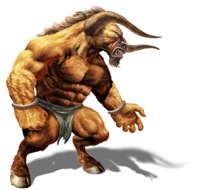I was hoping to play some videogames over fall break, but I didn’t have any luck tracking down a gaming system. So, instead, I thought I’d reflect on one of my childhood substitutes for video games: Adventure Quest. AQ is “an active, outdoor, renaissance-themed theater game”—not to be confused with a video game by the same name. Think live-action Dungeons and Dragons. I’ll borrow a description from the Renaissance Adventures website: “Children and teens create and playact the heroes of an incredibly fun and dynamic quest, working together, in a mythical and magical world, to overcome interesting challenges, solve mystifying riddles, brainstorm unique solutions to puzzling dilemmas, and swashbuckle with foes. Each child and teen creates a unique fantasy character to playact in the adventure by choosing from hundreds of special powers, over fifty races (such as Elf, Faerie, Goblin, Dwarf, Catlord, Centaur, Giant, or Monkeroo), and one or more archetypal careers (such as Wizard, Warrior, Spy, Healer, Nature Mage, Jester, Beastmaster, and Shapeshifter).”
A lot of this boils down to a bunch of 10-year-olds beating one another with foam swords, but what interests me for the purpose of this class is how all the participants shape the story world. The quest leader (a camp-counselor type) controls most of the syuzhet, deciding what obstacles the adventurers will encounter and when. However, the participants have a great deal of control over all the characters, which can influence the quest leader in formulating the details of any given situation. In one ongoing quest (after school twice a week for about 6 weeks), I was a cow knight (it’s magic, just go with it). Since the physical appearances of the characters were mostly imaginary, they didn’t usually impact the game, but sometimes the quest master took it into account. For instance, one of the characters (played by the quest master, as with most of the key figures the group encounters) that we needed to interact with turned out to be a butcher. We all thought that this portion of the game would be a riddle, since there was a relatively predictable pattern of alternating battles with traveling and problem-solving, but this guy kept eyeing me and acting strange until he eventually pulled out an axe and tried to slaughter my character. So, instead of riddling we had to fight off an army of angry butchers—all because my friend and I thought it would be cool to be cow people. I recall this being a surprising and satisfying twist, directly influenced by my bizarre conception of my character.

Writing about literature and film Chatman claims that, “the logic of narrative prevents [the narrator] from inhabiting the story world at the moment that he narrates it.” I agree with him for these traditional modes of narrative, but this seems to be an important point of departure for certain other narrative experiences—video games, “theater games,” etc. With a narrative game, the act of playing IS the act of narrating, to a significant extent. Of course, you are narrating within relatively strict limits. While I could choose to be a bovine half-breed knight, I couldn’t alter the eventual course of the game. Surely we (the child participants) would ultimately be allowed to win every battle and achieve the goal of the quest. If we died or were seriously wounded in battle, the leader would add some plot point about finding the magical cure and the game would go on; we weren’t allowed to let our fellow adventurers die (their parents were paying for the program, too). I imagine many videogames have similar restrictions on player input—you can do whatever you want within a given world, or set of limits.